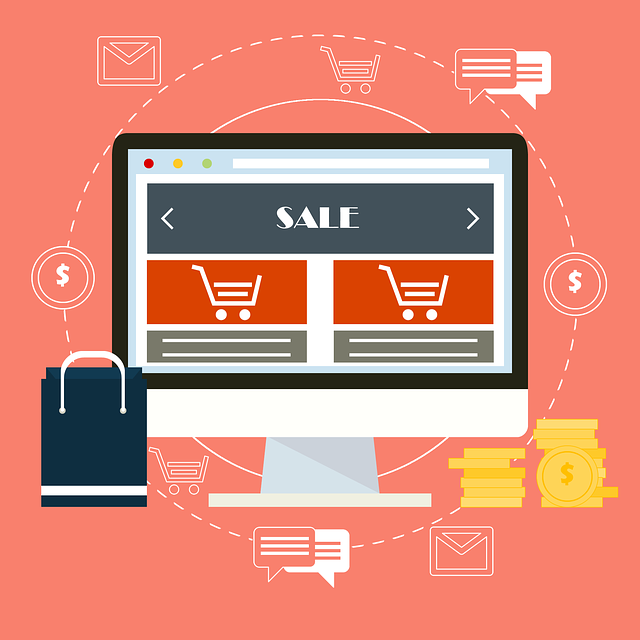Ecommerce chatbots, powered by AI and NLP, revolutionize online shopping by offering 24/7 instant support and personalized interactions, boosting customer satisfaction and sales. These digital assistants guide shoppers through their journey, answering questions, tracking orders, recommending products, and facilitating purchases. Implementing an ecommerce chatbot offers key benefits like round-the-clock availability, efficient handling of routine inquiries, data collection for personalized marketing, increased productivity, cost savings, and sales growth. Types of chatbots include rule-based, AI-driven, and hybrid models, with AI-driven ones providing the most advanced personalization and complex query handling. Integrating an ecommerce chatbot can significantly improve customer experience, automate tasks, personalize shopping journeys, reduce cart abandonment, and foster stronger brand relationships. Success is measured through key metrics like customer satisfaction scores, response times, and conversion rates.
In today’s digital landscape, understanding the potential of an ecommerce chatbot is crucial for enhancing customer experiences and driving sales. This comprehensive guide explores the fundamentals of these intelligent assistants, known as ecommerce chatbots. From key benefits like 24/7 support and personalized recommendations to various technology types and seamless integration, discover how they revolutionize online shopping. Learn effective strategies for measuring success and evaluating chatbot performance to maximize your investment. Embrace the power of AI-driven interactions.
- Understanding Ecommerce Chatbots: The Basics
- Key Benefits of Implementing an Ecommerce Chatbot
- Types of Chatbot Technologies in Ecommerce
- Integrating a Chatbot into Your Online Store
- Measuring Success: Evaluating Chatbot Performance
Understanding Ecommerce Chatbots: The Basics

Ecommerce chatbots are a cutting-edge technology designed to revolutionize online shopping experiences. They act as digital assistants, providing instant customer support and enhancing user engagement on e-retail platforms. These chatbots utilize artificial intelligence (AI) and natural language processing (NLP) to understand and respond to customer queries in real time. By offering 24/7 availability and personalized interactions, they significantly improve customer satisfaction and sales conversion rates.
The basics of an ecommerce chatbot involve a series of predefined conversations flows that guide customers through various stages of their shopping journey. They can answer common questions about products, assist with order tracking, offer recommendations based on browsing history, and even facilitate purchases. As the technology advances, these chatbots become more sophisticated, learning from customer interactions to provide tailored solutions. This not only streamlines the checkout process but also builds a stronger connection between customers and the brand.
Key Benefits of Implementing an Ecommerce Chatbot

Implementing an ecommerce chatbot offers a multitude of benefits that can significantly enhance both customer experience and business performance. One of the key advantages is 24/7 availability; chatbots provide instant support, allowing shoppers to get quick answers to their queries at any time, improving customer satisfaction and reducing wait times.
Additionally, these AI assistants streamline customer service by handling routine inquiries efficiently. This frees up human agents to focus on more complex issues, leading to increased productivity and cost savings for businesses. Ecommerce chatbots also collect valuable customer data through interactions, enabling personalized marketing campaigns and tailored product recommendations, ultimately driving sales growth.
Types of Chatbot Technologies in Ecommerce

In the dynamic landscape of e-commerce, integrating an ecommerce chatbot has emerged as a strategic move to enhance customer engagement and streamline operations. These chatbots are powered by Artificial Intelligence (AI) technologies, enabling them to understand and respond to customer queries in natural language. They can be categorized into three primary types based on their functionality: rule-based, AI-driven, and hybrid chatbots.
Rule-based ecommerce chatbots operate within predefined rules and scripts, following a set of predetermined responses for specific user inputs. While they offer simplicity and cost-effectiveness, their interactions are often limited and lack adaptability. In contrast, AI-driven chatbots leverage machine learning algorithms to learn from customer interactions, continuously improving their understanding and response accuracy. They can handle complex queries and provide personalized recommendations, significantly enhancing the customer experience. Hybrid chatbots combine elements of both rule-based and AI-driven approaches, offering a balance between structured rules and adaptive intelligence.
Integrating a Chatbot into Your Online Store

Integrating an ecommerce chatbot into your online store can significantly enhance customer experience and drive sales. These AI-powered assistants offer 24/7 availability, enabling instant product recommendations, answering frequently asked questions, and providing real-time support to shoppers as they browse. By automating these tasks, chatbots free up human customer service representatives to handle more complex issues, improving overall efficiency.
Moreover, ecommerce chatbots can personalize the shopping journey by leveraging customer data to offer tailored suggestions and promotions. They can also facilitate quick checkouts, gathering necessary information without asking users to navigate cumbersome forms. This streamlined approach not only reduces cart abandonment but also encourages repeat purchases and fosters stronger customer relationships.
Measuring Success: Evaluating Chatbot Performance

Measuring success is a critical aspect of evaluating an ecommerce chatbot’s performance. Key metrics include customer satisfaction scores, which can be gathered through post-interaction surveys or automatically via sentiment analysis of conversation logs. By gauging how positive and helpful customers perceive their interactions, businesses gain insights into the chatbot’s effectiveness in providing support and enhancing the shopping experience.
Another essential metric is the reduction in response times achieved by the chatbot compared to human agents. Ecommerce chatbots can significantly cut down wait times for customers seeking immediate assistance, thereby improving overall customer service levels. Additionally, tracking conversion rates before and after implementing the chatbot allows businesses to assess its impact on sales and revenue generation.
An ecommerce chatbot is no longer a futuristic concept but an essential tool for enhancing customer experience and driving sales. By understanding the basics, leveraging key benefits, choosing the right technology, seamless integration, and measuring performance, businesses can harness the power of these AI assistants to navigate the competitive online landscape. An ecommerce chatbot is not just a feature; it’s a strategic investment in your store’s future.
